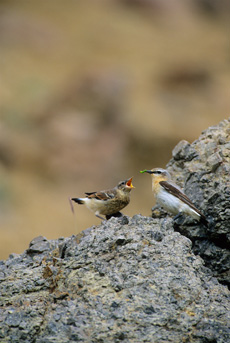Climate Change and the Arctic
A general pattern of change
The Earth's climate has been basically stable since the last ice age (about 10,000 years ago), allowing human life to prosper. Over the last two centuries, however, people have burned fossil fuels for energy at an ever-increasing rate and the climate has begun to change. Burning fuel produces gases, such as carbon dioxide, which act like the windows of a greenhouse, trapping heat from the sun. As a result, the Earth is rapidly warming up.
What's happening in the Arctic
The Arctic is warming about twice as fast as most other places. The annual ice is disappearing earlier in the spring and refreezing later in the fall, and the permafrost under the tundra is melting. Open water and exposed vegetation—both darker than ice—absorb sun more readily than solid snowpack or sea ice. As Arctic summers lengthen, the warming process accelerates.
The warmer climate is drawing new species from southern ranges, introducing competition for already scant resources. The ice-dependent creatures in the Arctic that are adapted to life on the northern fringes of the world have nowhere to go. The Arctic web of life is becoming severely stressed.
|

Northern Wheatear
Photograph by Hugh Rose
|

